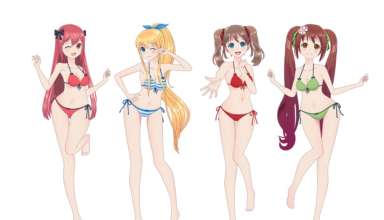Umai clothing is a boutique apparel brand designed around the original anime artwork of one of the company’s owners. You could look at one of their hoodies, T-shirts or hats, and instantly recognize the art that decorates it as belonging to the anime genre. But wait. Doesn’t anime have to be animated to qualify? And if so, isn’t Umai’s artwork more manga than anything else?
It is a very thin line that separates anime and manga. That thin line cuts through the heart of storytelling. Anime is essentially Japanese-style animation. It tells a story through both dialogue and movement. Characters move around in story scenes the same way they do in live action pieces.
Manga doesn’t use animation. It tells stories through still images and accompanying dialogue. Graphic novels are built around it, combining compelling stories with Japanese-style illustrations that make dialogue and narrative text come alive.
1. If It Doesn’t Move, Is It Anime?
The question of whether or not Umai artwork truly constitutes anime is a lot like that old philosophical question about the falling tree. It goes something like this: if a tree falls in the forest and no one is there to hear it, does it make a sound?
Common sense dictates that the tree does make a sound. After all, sound is nothing more than waves of energy that hit the eardrums and signal a neurological response. Those energy waves are produced by a falling tree irrespective of whether or not living creatures with ears are present when it happens.
Getting back to the anime question, can something be anime if it doesn’t involve movement? Technically, no. But in practice, yes. Anime is as much a style as it is an actual medium. You can create anime characters and plug them into a streaming series. And if that series is successful, you could turn around and go the merchandising route by producing T-shirts and sweatshirts featuring those characters.
Would that artwork be anime? Yes, at least in the sense that the characters on the T-shirts are taken from anime series. It would be like printing Looney Tunes characters on your clothing. The illustrations aren’t actually moving, but they are still understood as animation because they come from well-known animated cartoons.
2. Non-Animated Original Artwork
We are getting closer to answering the Umai question. However, there is one last thing to consider: all of Umai’s artwork is original. It has never appeared in an anime series. It has never graced the pages of a manga graphic novel. For all intents and purposes, it has always been still art.
As such, can it truly be considered either anime or manga? Probably not. But again, that takes us back to the style rather than the medium.
Both anime and manga are based in a uniquely Japanese form of illustration. You get anime when you take that illustration style and animate it. You get manga when you apply the style to things like comic books and graphic novels.
3. Anime is Hot Right Now
Of the two art forms, anime is arguably the more popular here in the US. In fact, it is downright hot right now. Media companies are falling all over themselves to sign new series for their streaming services. Filmmakers are lining up to get new productions rolling.
Anime’s popularity is such that, if you had to assign Umai artwork to either anime or manga, you would pick anime. People see their artwork and associate it with Japanese animation. Still, the company could associate its artwork with manga if they wanted to. The line really is that thin.








+ There are no comments
Add yours